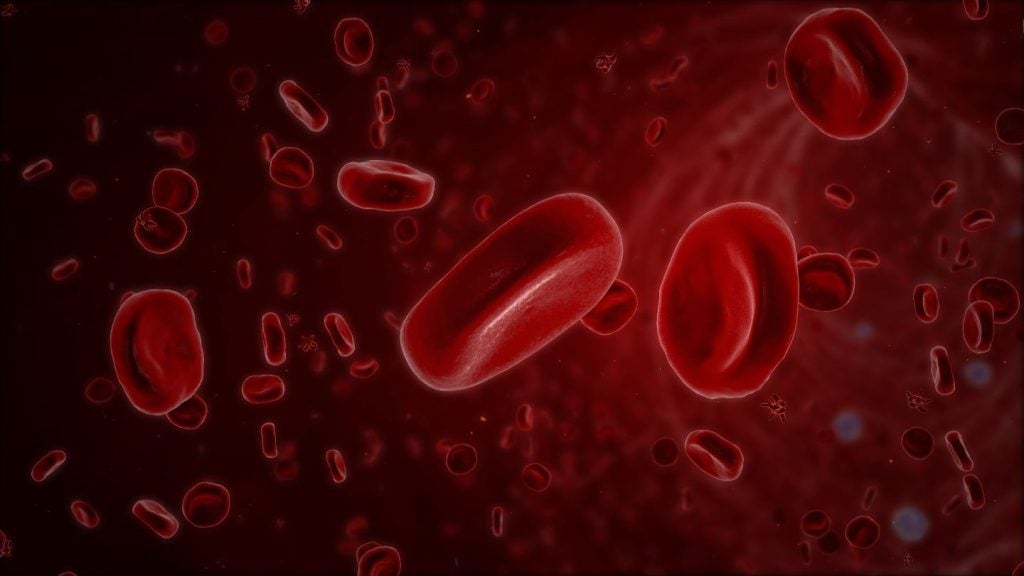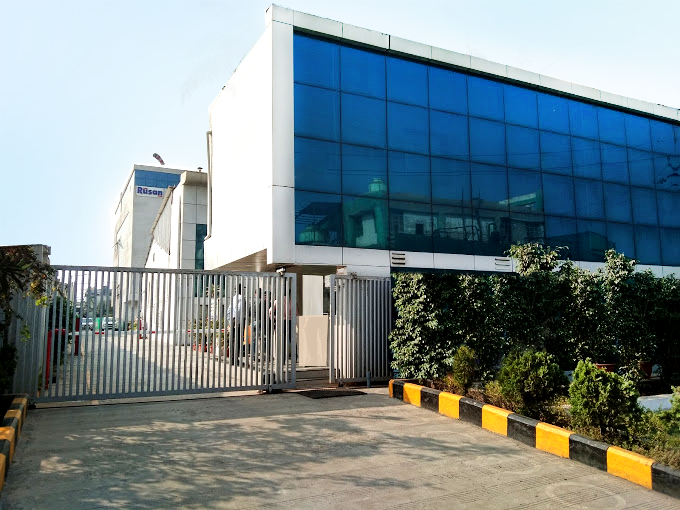The US Food and Drug Administration (FDA) has granted approval for Boehringer Ingelheim Pharmaceuticals (BIPI) and Eli Lilly and Company’s Glyxambi (empagliflozin/linagliptin) tablets to treat adults with type 2 diabetes (T2D).
The firms have received approval for Glyxambi as an adjunct to diet and exercise to improve glycemic control in patients, when both empagliflozin and linagliptin are appropriate treatments.
The drug aggregates 10mg or 25mg of empagliflozin with 5mg of linagliptin, and is not recommended in patients with type 1 diabetes to treat diabetic ketoacidosis.
Boehringer Ingelheim Pharmaceuticals president and CEO Paul Fonteyne said: “Today’s medical community recognises the need to treat type 2 diabetes from multiple fronts to help patients improve glycemic control.
“With Glyxambi, the dual inhibition of DPP-4 and SGLT2 — two proven targets in the treatment of type 2 diabetes — now provides US physicians and patients with an option to simultaneously address multiple pathways to improve glycemic control.”
Noted to be first diabetes treatment in the US, Glyxambi combines the dual mechanisms of action of a sodium glucose co-transporter-2 (SGLT2) inhibitor and a dipeptidyl peptidase-4 (DPP-4) inhibitor in a once-daily tablet taken in the morning.
How well do you really know your competitors?
Access the most comprehensive Company Profiles on the market, powered by GlobalData. Save hours of research. Gain competitive edge.

Thank you!
Your download email will arrive shortly
Not ready to buy yet? Download a free sample
We are confident about the unique quality of our Company Profiles. However, we want you to make the most beneficial decision for your business, so we offer a free sample that you can download by submitting the below form
By GlobalDataThe approval was based on a Phase III clinical study, which assessed the efficacy and safety of Glyxambi (10/5mg and 25/5mg) against the individual components of empagliflozin (10mg or 25mg) or linagliptin (5mg) in adults with T2D who were also taking high-dose metformin (mean dose 1889mg daily).
The trial randomised 686 adults with T2D and hemoglobin A1C (a measure of average blood glucose over the past two to three months) between 7% and 10.5%, and examined the change from baseline in A1C at 24 weeks.
Glyxambi demonstrated statistically significant reductions in A1C compared with empagliflozin and linagliptin alone at 24 weeks, in the trial, noted Eli Lilly.
Image: Eli Lilly Headquarters. Photo: courtesy of Guanaco152003.
……………………………………………………
Image URL: http://commons.wikimedia.org/wiki/Category:Eli_Lilly_and_Company#mediaviewer/File:2006_0219FirstFUJIFOLDER0012.JPG
https://investor.lilly.com/releasedetail.cfm?ReleaseID=894045
U.S. FDA approves first-in-class Glyxambi® (empagliflozin/linagliptin) tablets for adults with type 2 diabetes
RIDGEFIELD, Conn. and INDIANAPOLIS, Feb. 2, 2015 /PRNewswire/ — The U.S. Food and Drug Administration (FDA) has approved Glyxambi® (empagliflozin/linagliptin) tablets, from Boehringer Ingelheim Pharmaceuticals, Inc. (BIPI) and Eli Lilly and Company (NYSE: LLY), as an adjunct to diet and exercise to improve glycemic control in adults with type 2 diabetes (T2D) when both empagliflozin and linagliptin are appropriate treatments.
GLYXAMBI is not recommended in patients with type 1 diabetes or for the treatment of diabetic ketoacidosis. GLYXAMBI has not been studied in patients with a history of pancreatitis, and it is unknown if using GLYXAMBI increases the risk of developing pancreatitis in these patients.
GLYXAMBI is the first and only diabetes treatment in the U.S. to combine the dual mechanisms of action of a sodium glucose co-transporter-2 (SGLT2) inhibitor and a dipeptidyl peptidase-4 (DPP-4) inhibitor in a once-daily tablet taken in the morning. GLYXAMBI combines 10 mg or 25 mg of empagliflozin with 5 mg of linagliptin. SGLT2 inhibitors remove glucose through the urine by blocking blood glucose re-absorption in the kidney. DPP-4 inhibitors work by increasing hormones that stimulate the pancreas to produce more insulin and stimulate the liver to produce less glucose.
“Today’s medical community recognizes the need to treat type 2 diabetes from multiple fronts to help patients improve glycemic control,” said Paul Fonteyne, president and CEO, BIPI. “With GLYXAMBI, the dual inhibition of DPP-4 and SGLT2 — two proven targets in the treatment of type 2 diabetes — now provides U.S. physicians and patients with an option to simultaneously address multiple pathways to improve glycemic control. For patients uncontrolled on metformin, phase III trial results showed GLYXAMBI provided significantly greater reductions in blood glucose levels compared with either empagliflozin or linagliptin alone.”
GLYXAMBI should not be taken by patients with severe renal impairment, end-stage renal disease or dialysis; a history of hypersensitivity reaction to linagliptin, such as anaphylaxis, angioedema, exfoliative skin conditions, urticaria, or bronchial hyperreactivity; or history of serious hypersensitivity reaction to empagliflozin. There have been postmarketing reports of acute pancreatitis, including fatal pancreatitis, in patients taking linagliptin, a component of GLYXAMBI. Take careful notice of potential signs and symptoms of pancreatitis. If pancreatitis is suspected, promptly discontinue GLYXAMBI and initiate appropriate management. It is unknown whether patients with a history of pancreatitis are at increased risk for the development of pancreatitis while using GLYXAMBI.
“Half of people with type 2 diabetes do not achieve recommended blood sugar control, making new treatment options more important than ever,” said Mike Mason, vice president, U.S., Lilly Diabetes. “The approval of GLYXAMBI gives U.S. physicians and patients a first-in-class prescription medicine to help manage this condition. The approval is also a testament to our alliance’s commitment to adults living with type 2 diabetes.”
About the Phase III Clinical Trial
The FDA approval was based on a phase III clinical trial that evaluated the efficacy and safety of GLYXAMBI (10/5 mg and 25/5 mg) compared with the individual components of empagliflozin (10 mg or 25 mg) or linagliptin (5 mg) in adults with T2D who were also taking high-dose metformin (mean dose 1889 mg daily). The study, which randomized 686 adults with T2D and hemoglobin A1C (a measure of average blood glucose over the past two to three months) between 7.0 and 10.5 percent, examined the change from baseline in A1C at 24 weeks.
In the study, as an add-on to metformin, GLYXAMBI showed statistically significant reductions in A1C compared with empagliflozin and linagliptin alone at 24 weeks. Starting from a mean baseline of approximately 8.0 percent, adults in this trial achieved a mean A1C of 6.9 and 6.7 percent with GLYXAMBI 10/5 mg and 25/5 mg, respectively, compared with a mean A1C of 7.3 and 7.4 percent for empagliflozin 10 mg and 25 mg, respectively, and 7.3 percent for linagliptin 5 mg.
The percentage of patients achieving an A1C less than 7 percent with GLYXAMBI 10/5 mg or 25/5 mg was 58 percent and 62 percent, respectively, compared with 28 percent, 33 percent and 36 percent for empagliflozin 10 mg, empagliflozin 25 mg and linagliptin 5 mg, respectively.
Although not approved for lowering weight, GLYXAMBI provided significant weight loss at 24 weeks compared with linagliptin alone.
– GLYXAMBI 10/5 mg: average body weight reduction of 3.1 percent from an average baseline of 191 lbs
– GLYXAMBI 25/5 mg: average body weight reduction of 3.4 percent from an average baseline of 187 lbs
– Linagliptin 5 mg: average body weight reduction of 0.7 percent from an average baseline of 187 lbs
Through 52 weeks, the overall incidence of hypoglycemia with GLYXAMBI was 2.2 percent and 3.6 percent for GLYXAMBI 10/5 mg and 25/5 mg, respectively, and there were no cases of severe hypoglycemia reported in the trial. A lower dose of an insulin secretagogue or insulin may be required to reduce the risk of hypoglycemia when used in combination with GLYXAMBI.
Through 52 weeks, the safety profile of GLYXAMBI was demonstrated in a pooled analysis, and the most common adverse reactions were:
– Urinary tract infection (UTI): 12.5 percent and 11.4 percent for GLYXAMBI 10/5 mg and 25/5 mg, respectively; through 52 weeks, no patient discontinued GLYXAMBI due to UTIs
– Nasopharyngitis: 5.9 percent and 6.6 percent for GLYXAMBI 10/5 mg and 25/5 mg, respectively
– Upper respiratory tract infection: 7.0 percent for GLYXAMBI 10/5 mg and 25/5 mg
– About Diabetes
Approximately 29 million Americans and an estimated 387 million people worldwide have type 1 or type 2 diabetes, and nearly 28 percent of Americans with diabetes — totaling 8 million people — are undiagnosed. In the U.S., approximately 12 percent of those aged 20 and older have diabetes. T2D is the most common type, accounting for an estimated 90 to 95 percent of all adult diabetes cases in the U.S. Diabetes is a chronic condition that occurs when the body either does not properly produce, or use, the hormone insulin.
– Boehringer Ingelheim and Eli Lilly and Company
In January 2011, Boehringer Ingelheim and Eli Lilly and Company announced an alliance in diabetes that centers on compounds representing several of the largest diabetes treatment classes. This alliance leverages the strengths of two of the world’s leading pharmaceutical companies. By joining forces, the companies demonstrate commitment in the care of patients with diabetes and stand together to focus on patient needs. Find out more about the alliance at www.boehringer-ingelheim.com or www.lilly.com.







